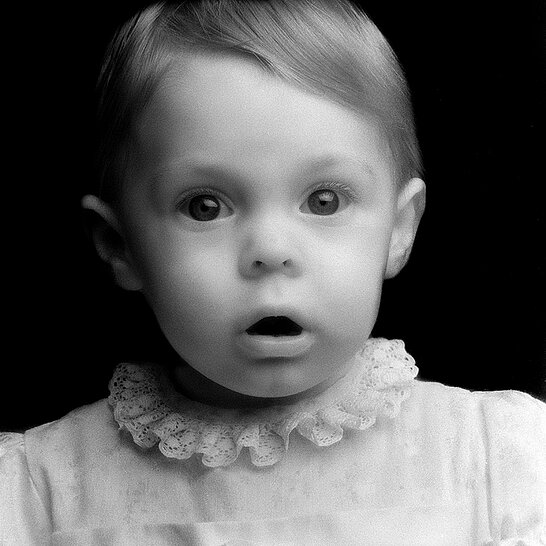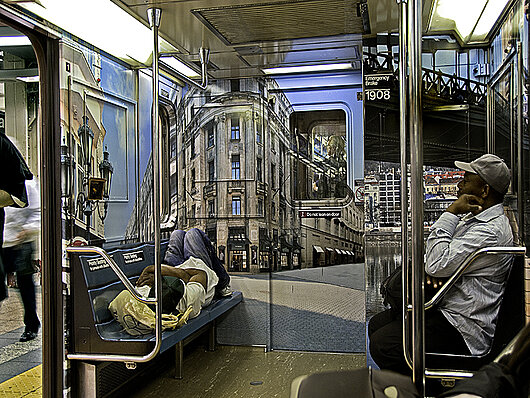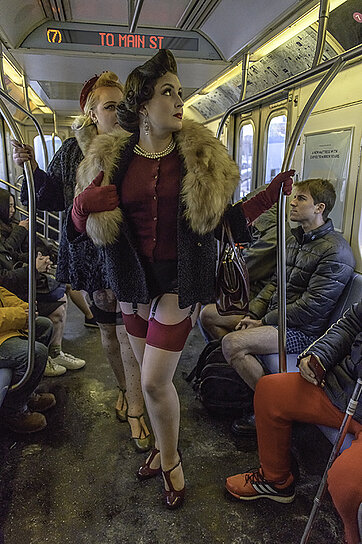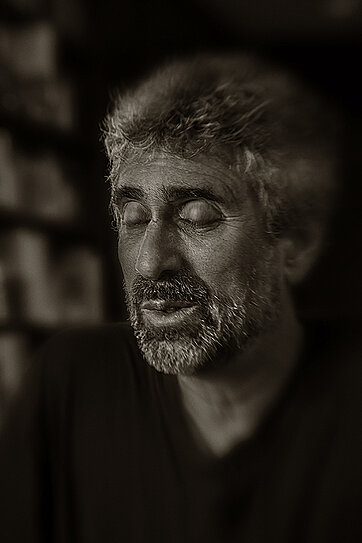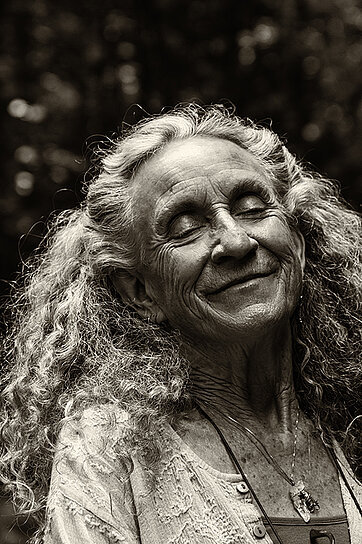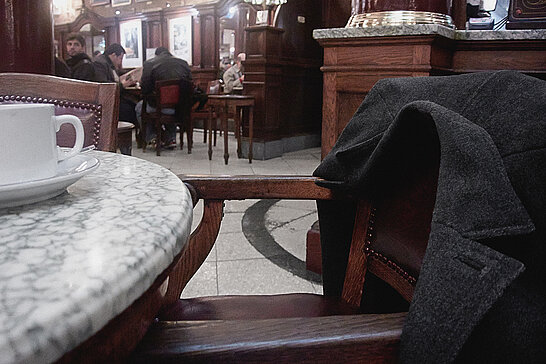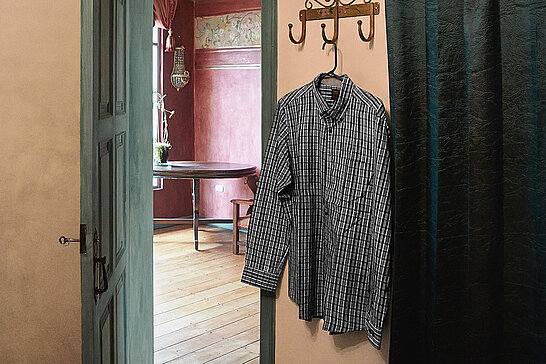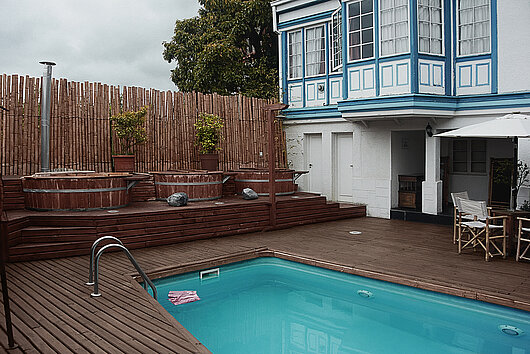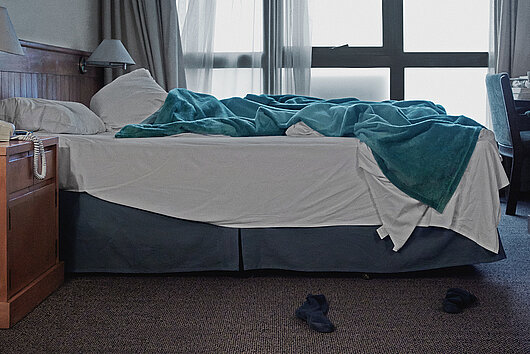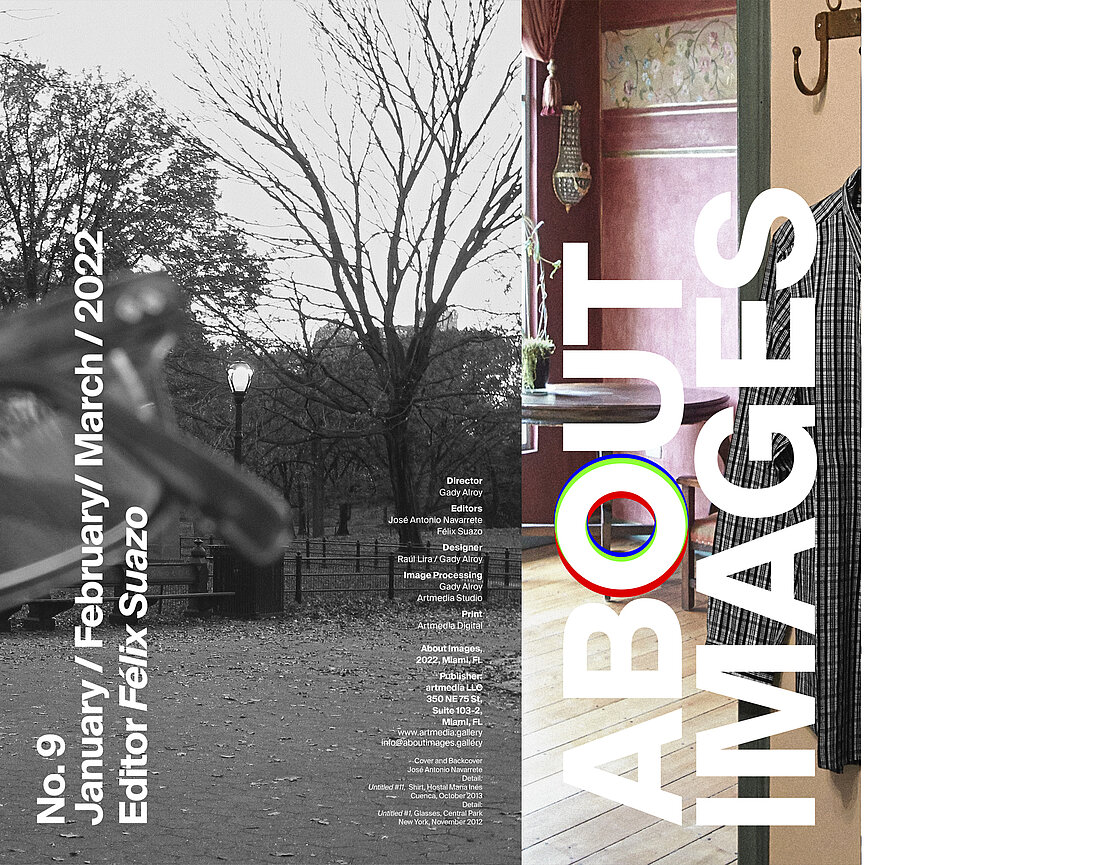
Editorial
What is decisive in photography: the image or the story that accompanies it? This question is recurrent, and the bets made to answer it are equal in one direction or the other. Many photographs are wrapped in suggestive accounts that allude to the author’s vicissitudes or the circumstances in which they were taken. On the other hand, others cling firmly to the retina of the observers or settle definitively in their unconscious.
Good photos can be perfect or hopelessly flawed. Good stories can be inspiring or frustrating. There are no formulas that guarantee a balance between images and accounts. Most of the time, photos and stories flow quite naturally in more than one direction. Photographers can do nothing to control the course of their narratives once their photos are made and circulating. When we stand in front of a photograph, we are confronted with a paradox. On the one hand, images can show more than can be said about them. On the other hand, the stories derived from the photos can tell us about things that are not visible to the naked eye. As in the other arts, meaning is not univocal and definitive in photography.
Indeed, extraordinary situations that occur outside the photographic act and the author’s viewpoint can affect the meaning of the images. Archives, exhibitions, and books activate processes of resemantization and generate other narratives to the itinerary of images. After all, the best stories are those that are valued and shared.
The newsletter About Images #9 includes reviews and comments on some current propositions about photography. Cuban-American photographer and professor J. Tomas Lopez reflects on his experience in the “Interview” section. The “Artist Page” is dedicated to the work of José Antonio Navarrete, who connects curatorial and photography practices. The “News” reviews several local exhibitions where photography plays a dominant role. The “Memories” gathers some of the most significant photographic events on the world scene from the 19th century to the present. In the sentence highlighted in “Ideas,” there is a thought by the German artist couple Bernd and Hilla Becher about objects and their context in photography. In this partial cartography of the photographic field, images and stories abound, both of which are crucial to understanding our relationship with the visible world.
By: Félix Suazo
“We want to offer the audience a point of view, or rather a grammar, to understand and compare the different structures.
(...)
Through photography, we try to arrange these shapes and render them comparable. To do so, the objects must be isolated from their context and freed from all association.”
Bernd and Hilla Becher
*Quoted in: Liliane Touraine. “Bernd and Hilla Becher: The function doesn’t make the form.” Artefactum, Antwerp, n° 28, April/May 1989, p. 9.
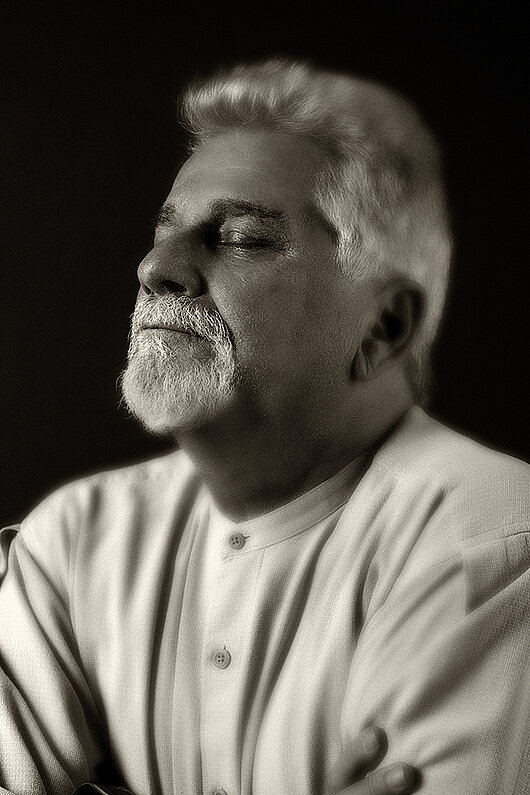
Interview with J. (Jose) Tomas Lopez
By José Antonio Navarrete
J. Tomas Lopez, Eyes Closed, 2022 (Photo by Carol Todaro)
Born in Camagüey, Cuba, in 1949, Lopez emigrated to the US with his parents in 1955. When he was 12, his father gifted him a camera, and photography became one of his interests. He studied Philosophy and Psychology at Fordham University. After two years in the US Army, he received an MMA from the University of South Carolina and an MFA in Photography and Modernist Studies from the University of South Florida. He has been a professor since 1977 while maintaining an active art practice. In 1994, Lopez was hired to be a professor and head of photography at the University of Miami. He has exhibited his work extensively in the US and abroad. His AIDS portraits are included in Radical Conventions: Cuban American Art from the 1980s, an ongoing exhibit at the Lowe Museum of Art in Miami.
José Antonio Navarrete
What was your motivation for studying and practicing photography as an art?
J. Tomas Lopez
While photography was a hobby as a boy, when I went to college I decided to study philosophy and psychology to become a therapist. I was drafted into the army in 1972 and assigned to help returning Viet Nam veterans with their drug addiction. During the group sessions with these damaged men, I saw how their own photographs functioned as a catharsis to explain how war caused the damage to their psyche.
My view of art and photography, in particular, changed. I saw that a photograph could be more than just a picture. It links memory, experience, joy/pain and, in a wonderful way, helps the photographer explain their place in the world to others. At that moment, I decided to study photography —to have a dialogue between myself and the world. That was in 1974. I entered an interdisciplinary program in film and photography and never looked back.
JAN
How have you understood your photography teaching practice regarding your art practice?
JTL
They say if you wish to learn something, the best way is to teach it. Teaching is very significant to me. My approach to photographic education stresses the same values that I find critical in my work: technical excellence in the service of strong intellectual and emotional content. My students are given a thorough knowledge of the technical aspect of the medium. They are then encouraged to make images of what they know to comment and form value judgments based on their readings and experiences. I ask them the same questions I ask myself —to be cognizant of the world and critically aware of their response to that world. Having degrees in Psychology, Media Theory, and Fine Art Photography helps me communicate not just the how but the why of it not just in the classroom but in my personal projects.
JAN
What are the most important ideas about photography as an art practice that you want to convey to your students?
JTL
Artists have a social, historical, and ethical responsibility to participate in community debate. It is the artists’ charge to interpret their experiences and the experiences of their communities. Students should understand that art cannot be produced in a vacuum; that the work —and its meaning— exists in contextual relation to the world that inspired it and in whose vortex it is produced. The artists’ visions may help define the experiences of their community; however, the artists’ visions and experiences are not separate from that world.
I argue for the possibility that all students benefit from an Arts Education and that through their pursuit and study of art —specifically photography— they can see themselves as fellow travelers on a fantastic journey. Through this practice, they may begin to understand and appreciate the meaning of their experiences and thus better understand those of others.
José Antonio Navarrete
Object and meaning
By Félix Suazo
The curatorial gaze and the photographic eye intersect in the work of José Antonio Navarrete. In his images, he investigates issues that also interest him in curatorship, specifically the process of constructing meaning. Such concern is eloquently manifested in the series What images can do, initially presented in his solo exhibition at Art Media Gallery (2014) and later included in the group show Something (to tell you) about objects, also at Art Media Gallery (2022).
In this case, personal objects play a detonating role as activators of the discourse. Glasses, gloves, backpack, scarf, shirt, jacket, sneakers, and other items appear out of place, interrupting the vision and suggesting events in development or already happened. The objects reveal an elusive presence that leaves its mark in museums, parks, swimming pools, lakes, facades, hotels, and cafes in different cities: Miami, New York, Washington, Valparaiso, Montevideo, Buenos Aires, Bogota, Santo Domingo.
We now know that this is a deliberate gesture. However, the unsuspected power of these interventions escapes any foresight. Navarrete’s images can recompose what we see and activate unexpected narratives. In one of these bifurcations arises the exploratory impulse —so akin to photography
and an inevitable attribute of
curatorial action.
Consequently, his images are also a cartography of his professional displacements through those sites consubstantial to his curatorial practice: places where his slight, fleeting optic traces remain. These are the marks of an itinerary. They attempt to reconstruct the operations of the gaze as a re-signifying resource of the visible world. Every object is not just a “thing” placed or left to chance but a device for meaning activation.
Memories
1840
In January, the civil servant Ferdinand Worhnitz, returning from a voyage to Europe, arrives in Port Luis, Mauritius, with a daguerreotype camera that allows him to take the first photographs on the island on February 25 or 26.
1859
In Chine, the earliest documented studio run by a native is set up in Shanghai by Luo Yuanyou, a fact recorded in the Diaries of Wang Tao, published in Beijing in 1987.
1871
When her husband George dies, British-born Elizabeth Pulman (1836-1900) takes into her hands the work of Pullman’s photographic studio in Auckland, New Zealand, which has opened four years before.
1892
In Meadville, Pennsylvania, Benneville Lloyd Singley (1864-1938) founds The Keystone View Company, a stereography and lantern slide firm active until 1963 that gathers a collection of 350,000 items offering a comprehensive view of world history and cultural diversity.
1903
In Chile, on April 25, the weekly magazine Sucesos starts to follow the strike that, organized by the stevedores employed by the British-owned Pacific Steam Navigation Company (PSNC) in Valparaiso, spreads in a few days among maritime workers of this port city.
1913
A Nazareth-born from Lebanese roots, Karima Abboud (1896-1900), considered the first Palestinian woman photographer, starts to practice photography featuring natural sceneries, cities, historical monuments, family members, and friends.
1929
In Seoul, Jeong (or Jung) Hae-chang (1907–1968) presents 50 images of local landscapes, customs, and habits of the population in what is considered the first Korean art photography exhibition.
1936
A group of idealistic documentary photographers, including Berenice Abbott (1898-1991), Paul Strand (1890-1976), Sid Grossman (1913-1955), Sol Libsohn (1914-2001), and Aaron Siskind (1902-1991), founds The Photo League in New York City, an institution of fifteen years duration which incorporates a school, darkroom, gallery, and salon.
1947
After World War II, press photographers Robert Capa (1913-1954), David “Chim” Seymour (1911-1956), Henri Cartier-Bresson (1908-2004), and George Rodger (1908-1995) found the cooperative agency Magnum Photos in Paris to allow its members to keep the control of their works and combine mini-cameras with inspirational journalist projects.
1954
In Havana, Cuban anthropologist Lydia Cabrera (1899-1991) publishes her book El monte: Igbo Finda, Ewe Orisha, Vititinfinda (Notes about religions, magic, superstitions, and folklore of Cuban people and creole blacks), a book that includes photographs by Teresa de la Parra (1889-1936), María Teresa de Rojas (1902–1987), Barón J. de Briskei Dobrony (1922-2010), and photographer Josefina Tarafa (1907-1982), who provides the most of the illustrations.
1968
Artists Jyoti Bhatt (1934), Feroz Katpitia (1926-1998), Narendra Mehta, Jeram Patel (1930-2016), Vinodray Patel (1933-2007), Vinod S. Patel (1938), and Gulam Mohammed Sheikh (1937), who are also teachers at the Faculty of Fine Arts in the Maharaja Sayajirao University of Baroda, participate in the experimental photography exhibition Painters with a Camera, open on November 8 at Jehangir Art Gallery in Bombay (now Mumbai).
1979
The Ateneo de Caracas publishes the book Letreros que se ven, a collective project by Venezuelan photographers Ricardo Armas (1952), Alexis Pérez-Luna (1949), Vladimir Sersa (1946), Jorge Vall (1949) and Fermín Valladares (1947), five members of the called El Grupo, formed in 1976.
1988
In London, Autograph ABP (Association of Black Photographers), founded to support black photographic practices, launches an ambitious program of exhibitions, publications, and events.
2002
With a small, modest seat, the Centro de Fotografía opens in Montevideo, Uruguay, as a unit attached to the Intendencia de Montevideo, but quickly becomes a prestigious international institution with a variety of programs dedicated to promoting author photography practice.
2013
Tim Chapman, a forty-year photojournalist at the Miami Herald from 1972 to 2012, donates his life’s work to the HistoryMiami Museum, including his coverages of the Mariel Boatlift, the Cocaine Cowboys era, and Hurricane Andrew, among other local and international events.
2022
As part of the Kyoto City Kyocera Museum of Art’s first-anniversary exhibition, the institution presents a solo show by the self-portrait photographer Morimura Yasumasa (b. Osaka, 1951), who is one of the leading Japanese contemporary artists.

E. (Elizabeth) Pulman (1836-1990)
Auckland, New Zealand
Portrait of unidentified Maori woman
ca. 1880
Photographic Print
Alexander Turnbull Library
Wellington, New Zealand
News
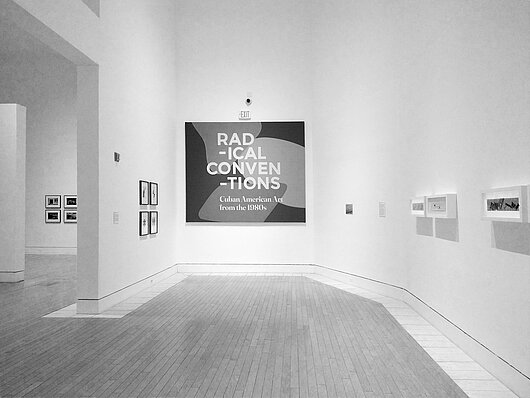
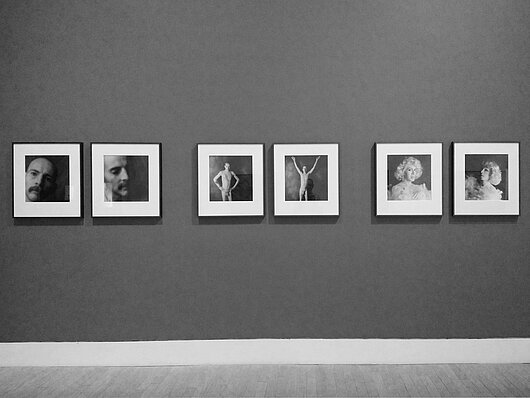
1 View in Perspective
Radical Conventions. Cuban American Art from the 1980s
Lowe Art Museum University of Miami, Coral Gables
March 17 - June 12, 2022
Curated by Elizabeth Cerejido, PhD Esperanza Bravo de Varona Chair, Cuban Heritage Collection
The exhibition Radical Conventions. Cuban American Art from the 1980s “provides a counter-narrative to the prevailing discourse on Cuban American art (which tends to examine this material through the reductive lens of exile and displacement) and locates the cultural formation and artistic practice of its featured artists in nuanced social and political contexts. By dispensing with the more typical binary-identity focused approach, the works reveal the impact of other identities. Beyond biculturalism, issues related to sexuality, gender, religion, class, and political positionings—especially vis-à-vis Cuba and Cuba/US relations—are addressed within the wider aesthetic frameworks of the American avant-garde of the late 1970s and 1980s.”
In addition to paintings, collages, objects, installations, and video works, the exhibition includes a large group of visual propositions that use photography in different ways. Among these are works by María Martínez-Cañas, Félix González-Torres, Tony Mendoza, Silvia Lizama, J. Tomas Lopez, Luis Medina, Mario Algaze, Carmelita Tropicana, Ana Mendieta and José Bedia, for whom photography fulfills diverse functions as a testimonial record, a documentation of performances, a means of conceptual reflection, and a resource for personal meditation.
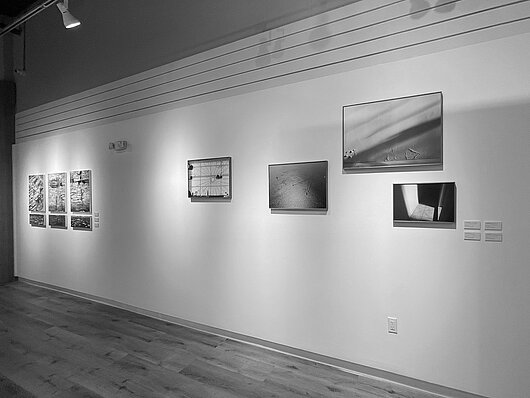
2 Women of Vision. INSIDE | OUTSIDE
Doral Contemporary Art Museum (DORCAM)
CityPlace Doral, Miami
March 8, 2022
Photography exhibition curated by Edith Monge-Silva
The Doral Contemporary Art Museum (DORCAM) celebrates International Women’s Month with the photographic exhibition INSIDE | OUTSIDE, featuring a selection of local, national, and international women artists. “In INSIDE | OUTSIDE, a group of women artists walks us through nature, history, the city, and domestic intimacy. They also tell us about time and its inescapable presence in memory through the lens of their photographic narratives.”
Artists: Adriana Amelia, Claudia Ammirata, Itzel Basualdo, Carolina Bonnelly, Amanda Bradley, Maritza Caneca, Gianna D, Alexandra Del Canto, Carla Díaz, Mariza Formaggini, Ashley G. Garner, Mirta Gomez, Carol Jazzar, Ivonete Leite, Ingrid Lozano Pizzano, Flor Mayoral, Vero Murphy, Peggy Nolan, Mari Carmen Orizondo, Katherine Prock, Angelika Rinnhofer, Lissette Schaeffler, Lisl Steiner, Magüi Trujillo, Maru Ulivi, Carrington Ware, Mariana Yazbek, Julia Zurilla.
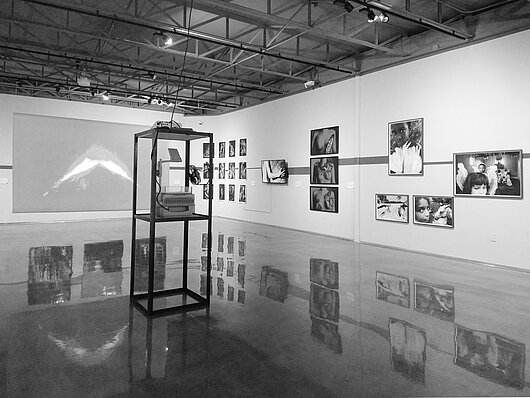
3 Forest: Ancestry and Dystopia
Fundación Pablo Atchugarry Miami
February 19-July 16, 2022
Curated by Eder Chiodetto
Group exhibition presented by The55 Project Art Foundation + Fundación Pablo Atchugarry Miami, with the participation of 16 Brazilian artists, whose works “examine the delicate balance between ecology, ancestral communities, and unbridled ambition, with a profound impact on the planet”. Most of the exhibited works use photography as their primary creative tool.
Artists: Claudia Andujar, Luiz Braga, Rodrigo Braga, Gisela Motta, Leandro Lima, Walda Marques, Elaine Pessoa, Elza Lima, Edgar Kanaykõ, Rogério Assis, Regina Parra, Lalo de Almeida, Victor Moriyama, Nailana Thiely, Luciana Magno, Ana Nitzan.



